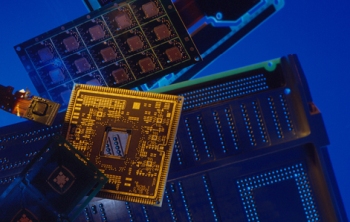• The pace and course of the semiconductor cycle are worth closely watching. An inflexion point is possibly at hand, after a lousy past 12 months or so on bloated inventory and weak demand. • Investors recognise that opportunities are to be had from accumulating semiconductor stocks ahead of an accelerating upturn. • Investors recognise that opportunities are to be had from accumulating semiconductor stocks ahead of an accelerating upturn.• Semiconductors are essential components in a wide range of products, including smartphones, computers, cars, and industrial equipment. As the global economy continues to digitalize, demand for semiconductors is expected to grow significantly in the coming years. • Singapore-listed companies exposed to the semicon cycle include: AEM, UMS, Frencken, Avi-Tech, and Micro-Mechanics. DBS Research's latest piece on the cycle is pretty optimistic. Read more below... |
Excerpts from DBS report:
Analysts: Lee Keng LING & Fang Boon FOO
| Drivers intact for further semiconductor upside |
The semiconductor industry is projected to register a strong growth of 20.4% y-o-y in 2024, after a bad year in 2023 of an estimated 12.5% drop in semiconductor revenue, according to data from Gartner.
SOX Index, a proxy for semiconductor stocks, continues to pull ahead of markets.
Expectation for bottoming of macro data and further improvement in industry data, coupled with potential of generative artificial intelligence (gen-AI) through ChatGPT turned into a forceful tailwind for this sector which remains till today.
| Hardware as a beneficiary of gen-AI growth |
With genAI likened to the evolution/proliferation of the internet, it does suggest that AI is likely to remain as a key investable theme with a wide, fast-growing addressable market over time.
| "With genAI likened to the evolution/proliferation of the internet, AI is likely to remain a key investable theme with a wide, fast-growing addressable market over time." |
Hardware segment is one to watch: Bloomberg Intelligence sees gen-AI as a US$1.3trn market by 2032 (2022-32 CAGR of 42%), with hardware poised to be the largest single segment at US$642bn (or close to 50% of total spending).
| Green shoots in recent macro data |
Industry data showing further signs of stabilization. Recent datapoints affirm to our view for improving outlooks for electronics and semiconductors sectors.
First, global semiconductor shipments in Jul-23 are showing signs of stabilization –
1) y-o-y fall of 11.8% is lower than Jun’s 15.8% decline, and
2) recorded the 5th straight month of m-o-m growth.
Latest trade data published by major electronics exporting countries (e.g., South Korea, Taiwan) are also showing nascent signs of bottoming/recovery.
Furthermore, DBS Economists see four industry dynamics that should support for improving outlook:
| 1) bottoming electronics demand, 2) accelerating inventory destocking, 3) consumer spending picking up on new phone releases, and 4) ramping up of GPU orders by global tech giants. |
| Positive cue from improving earnings growth |
Resumption of index earnings growth points to an outlook that is set to improve from hereon.
First, the recent pickup in earnings growth – after the bottoming in May-23 – suggests that “the worst is over”.
This may be so for segments that have lagged (e.g., memory, consumer electronics) during the ongoing slowdown, which analysts are expecting to be close or at the cusp of a positive inflection point.
Earnings have also been revised upwards to reflect the potential contribution from AI to earnings, which analysts have thus far been sanguine on.
We have seen positive earnings revision for companies that had provided additional colour/guidance from incremental AI, such as Nvidia, AMD, Broadcom, and Marvell.
| Valuations rich, but justifiable |
Bouts of profit-taking as well as recent earnings revision for index-heavy stocks like Nvidia have led to the easing of forward PE valuations for the SOX Index.
While still at elevated (+1.5SD) levels, we believe the rich valuations is justified in anticipation of the wider industry recovery, and the potential/growth of AI.
Trading liquidity for these two is also better than XSD. However, XSD offers exposure to a larger basket of stocks, including large and also mid-to-small caps stocks. |
Full report here.





